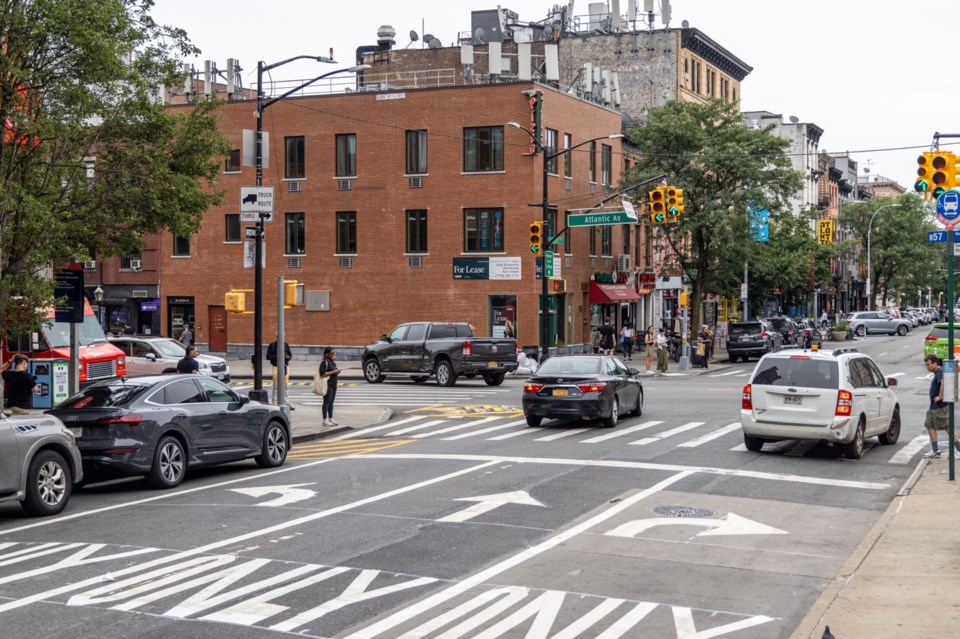The New York City Department of Transportation announced a series of short-term projects that will improve pedestrian safety on the western portion of Atlantic Avenue.
The enhancements includes expanded pedestrian space, upgraded traffic signals and new vehicle travel lane markings to reduce turn conflicts at Court Street; two new concrete pedestrian islands to be constructed at Columbia Street; new mid-block crosswalks between Court Street and Clinton Street and Henry Street and Clinton Street, according to a news release.
Curb enhancements, such as loading zones, could be potentially implemented along the corridor in consultation with the community, the press release said.
“Atlantic Avenue is a vital transportation artery for Brooklyn, and these critical upgrades will make it significantly easier to walk the avenue, support economic development and enhance safety by better managing traffic through the corridor,” said DOT Commissioner Ydanis Rodriguez.
Mid-Block Crossings
Mid-block crossings are dedicated spaces for pedestrians to cross the street without having to wait at the nearest intersection, thus creating a more direct and efficient route. Installation includes a painted crosswalk and new traffic signal.
Earlier this year, NYC DOT installed three mid-block crossings along Atlantic Avenue. Building on the success of this work, the agency is studying additional locations for this treatment, including:
- Between Clinton Street and Court Street, which was recently approved and is being scheduled for implementation.
- Between Henry Street and Clinton Street, which will be further analyzed for feasibility this summer.
Court Street and Atlantic Avenue Signal Adjustments
NYC DOT will update vehicle travel lane marking, implement signal changes and expand pedestrian space at Court Street and Atlantic Avenue. The split phase traffic signal will allow a green phase for vehicles traveling in one direction, proceeded by a green phase for all vehicles traveling the opposite direction.
Vehicle travel lanes will be reassigned to support these signal changes and a painted curb extension will be added for additional pedestrian space. Installation of the traffic signal hardware and timing changes are already in progress with markings and other vertical elements like rubber speed humps and delineators to be implemented later this month.
Columbia Street and Atlantic Avenue Street Improvement Project
The agency said it plans to begin work on an intersection project that would enhance safety by shortening crossing distance for pedestrians accessing Brooklyn Bridge Park through the separation of vehicle movements from pedestrian movements. These upgrades include:
- Shortening the crossing distance for pedestrians by building two new concrete pedestrian islands.
- Fully separating crossing pedestrians from turning traffic by converting the existing uncontrolled vehicular slip lane from Atlantic Avenue to Columbia Street into a signalized lane.
- Adding the southbound left turn from Furman Street to Atlantic Avenue to the signal phasing.
Atlantic Avenue Curb Enhancements
The DOT is also refining an Atlantic Avenue Curb Access plan that seeks to reduce double parking by vehicles, conflicts between street users and alleviate traffic congestion after receiving recommendations from the community and an analysis was conducted of captured data along the corridor, the press release said.
“We need all hands on deck to curb traffic violence on Atlantic Avenue,” said Brooklyn Borough President Antonio Reynoso. “Thank you to all the elected officials, community groups, and local residents and families that helped bring attention to the dangers on Atlantic Avenue and the safety measures within reach."




